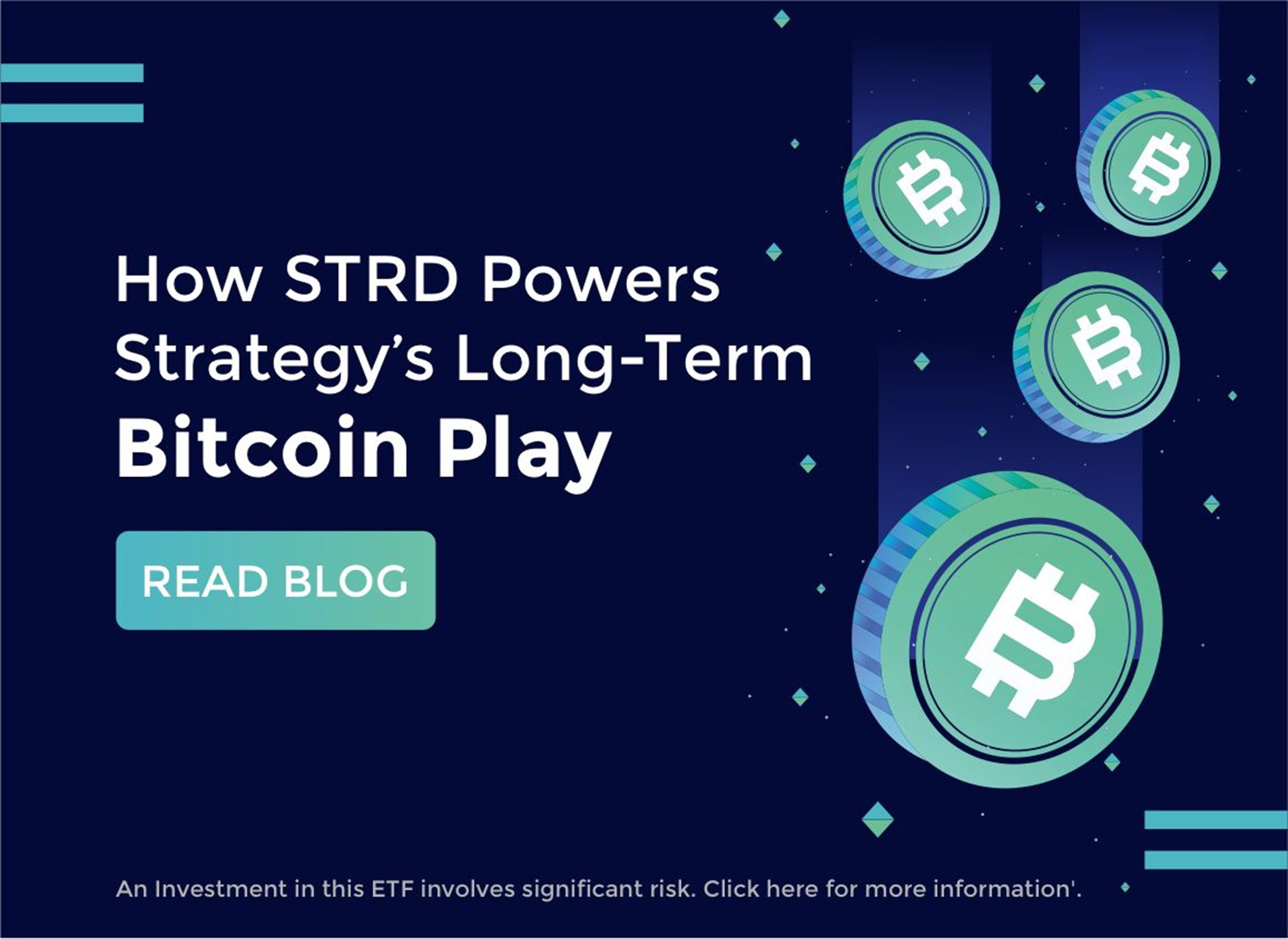How STRD Powers Strategy’s Long-Term Bitcoin Play
Posted:
Strategy (formerly known as MicroStrategy) has become synonymous with corporate Bitcoin exposure. Since pivoting its treasury strategy in 2020 under Executive Chairman Michael Saylor, the company has transformed itself from a business intelligence software firm into the world’s largest publicly traded holder of Bitcoin. This bold move has made its stock (MSTR) a popular vehicle for institutional and retail investors seeking indirect Bitcoin exposure.
To support its ongoing accumulation of Bitcoin, Strategy has employed a variety of financing tools, ranging from convertible debt to equity sales and preferred stock offerings. Its most recent innovation is STRD, the company’s third series of preferred shares. While relatively under the radar compared to headline-making bond issuances or equity raises, STRD may represent one of the most efficient tools Strategy has deployed to deepen its Bitcoin exposure without immediately diluting common shareholders or taking on traditional debt.
This article explores the design and strategic function of STRD and how it fits into Strategy’s broader Bitcoin accumulation framework. As the company continues to bet on the long-term value of Bitcoin, understanding the mechanics and implications of STRD is key to evaluating the sustainability and financial engineering behind that bet.
H2: Strategy’s Evolving Bitcoin Thesis
Since mid-2020, Strategy has centered its corporate identity around a bold macro thesis: that Bitcoin is superior to cash as a long-term store of value. Under Michael Saylor’s leadership, the firm adopted Bitcoin as its primary treasury reserve asset, arguing that inflation and currency debasement made traditional fiat holdings increasingly risky.
This conviction led Strategy to begin acquiring Bitcoin aggressively, using both internal cash and various capital market instruments. Over time, the company has accumulated more than 200,000 BTC (as of mid-2024), making it the largest publicly traded corporate holder of the cryptocurrency.
Strategy’s thesis hinges on Bitcoin’s scarcity, decentralization, and deflationary design. The company views BTC as "digital property" and believes that, over time, its value will continue to appreciate relative to fiat currencies and other traditional stores of value. As a result, Strategy doesn’t just treat Bitcoin as an asset; it has embedded Bitcoin accumulation into its business model.
What STRD Is and How It’s Structured
STRD is Strategy’s third series of preferred stock, launched in 2024 as part of the company’s ongoing effort to finance Bitcoin acquisitions without resorting to common equity dilution or traditional debt. Officially designated as Strategy Series D Cumulative Convertible Preferred Stock, STRD follows earlier preferred issuances MSTR+ and MSTR++ and represents a continuation of the firm’s creative capital-raising strategy.
Preferred shares like STRD sit between debt and common equity in the capital structure. They typically offer fixed dividend payments and have priority over common stock in the event of liquidation. However, unlike debt, they do not impose interest obligations or maturity dates, making them a flexible tool for companies looking to preserve liquidity.
Key features of STRD include:
- Cumulative Dividends: STRD pays a fixed dividend rate that accrues if unpaid, giving investors a reliable income stream, provided Strategy maintains financial health.
- Convertible: STRD holders may have the option to convert their shares into common stock, typically at a pre-defined conversion rate. This provides upside potential if MSTR shares rise significantly.
- Non-Voting: Preferred shareholders generally do not have voting rights, meaning STRD allows Strategy to raise capital without affecting control dynamics.
- Use of Proceeds: In line with Strategy’s past offerings, capital raised through STRD has been primarily used to purchase more Bitcoin.
STRD represents a relatively low-risk, fixed-income-like vehicle for investors who want exposure to Strategy’s Bitcoin accumulation strategy without taking on the volatility of common equity. For Strategy, it offers a non-dilutive, long-duration source of capital aligned with its belief in Bitcoin’s long-term upside.
This foundational belief has shaped the company’s financial strategy, with new capital raises, whether through debt, equity, or preferred stock, frequently directed toward acquiring more Bitcoin. STRD is the latest example of that approach in action.
Why STRD Matters in Strategy’s Capital Plan
STRD plays a critical role in Strategy’s broader financial engineering efforts to expand its Bitcoin holdings while managing risk and capital structure. Unlike conventional debt, which carries fixed interest obligations and can strain cash flow, or common equity, which dilutes existing shareholders, STRD offers a middle pathraising capital efficiently without immediate dilution or high financing costs.
In a rising interest rate environment, issuing new debt can be expensive and restrictive. Preferred stock like STRD allows Strategy to sidestep those challenges. It provides fixed dividend payments to investors but doesn't involve principal repayment obligations or covenants. This flexibility is especially useful for a company like Strategy, which aims to allocate significant capital to a volatile asset like Bitcoin.
Another key benefit is timing. By issuing STRD, the Strategy can raise capital during favorable market windows and quickly deploy it into Bitcoin purchases. The convertible nature of the preferred shares also aligns the interests of investors with long-term performance. If Bitcoin appreciates and MSTR stock rises, STRD holders may choose to convert into common shares, which supports shareholder alignment and long-term capital formation.
How STRD Affects the Balance Sheet and Bitcoin Holdings
The introduction of STRD has direct implications for Strategy’s balance sheet and its ability to expand Bitcoin holdings. As a preferred equity instrument, STRD increases the company’s capital base without immediately impacting debt levels or diluting common shareholders. This structural advantage enables Strategy to maintain a relatively lean debt profile while continuing its aggressive Bitcoin acquisition strategy.
The proceeds from the STRD issuance have been used consistently with the Strategy’s prior actions to purchase additional Bitcoin. This has contributed to a steady increase in the firm’s total BTC holdings, reinforcing its role as a corporate Bitcoin proxy. Because preferred shares do not require principal repayment, Strategy retains greater liquidity and flexibility in how it manages its balance sheet.
From an accounting perspective, preferred stock appears in the equity section of the balance sheet, typically under “temporary equity” or “mezzanine equity,” depending on terms. It does not dilute earnings per share unless converted. At the same time, the dividend obligations associated with STRD, though not interest expenses, can weigh on free cash flow and must be considered in any sustainability analysis.
Importantly, STRD also affects Strategy’s per-share exposure to Bitcoin. By using preferred stock to finance BTC purchases, the Strategy can increase total Bitcoin holdings without increasing the number of common shares outstanding, potentially boosting the BTC-per-share ratio over time.
In essence, STRD helps Strategy scale its Bitcoin reserves while preserving core balance sheet strength and strategic flexibility key attributes for navigating volatile crypto and capital markets.
Risks and Considerations for Investors
While STRD is a flexible way for Strategy to fund Bitcoin purchases, it carries meaningful risks.
- Market Dependence: STRD’s success relies on continued investor confidence in the Strategy’s Bitcoin strategy.
- Dividend Pressure: Cumulative dividends can strain cash flow during downturns.
- Dilution Risk: Conversion to common stock could dilute shareholders if MSTR rises.
- Liquidity Issues: Preferred shares like STRD may trade with low liquidity or discounts.
- Bitcoin Volatility: A sharp BTC decline can weaken the Strategy’s financial position and STRD’s appeal.
- Complex Capital Stack: More financing layers add complexity to evaluating risk and value.
STRD is best seen as a high-conviction tool suited for those who believe in Bitcoin’s long-term upside and Strategy’s ability to execute.
STRD’s Role in Strategy’s Long-Term Bitcoin Plan
STRD strengthens the Strategy’s ability to pursue sustained Bitcoin accumulation without over-relying on debt or diluting common equity. Its structure aligns with the company’s long-term thesis by offering flexible, non-maturing capital that supports BTC purchases through market cycles.
If Bitcoin’s value continues to rise over time, STRD may enhance shareholder value by boosting BTC per share and improving capital efficiency. As part of a broader financing mix, STRD helps Strategy maintain balance sheet flexibility while staying committed to its Bitcoin-first approach.
In the long run, STRD is more than a funding tool; it’s a strategic component in how Strategy builds exposure to Bitcoin in a disciplined, scalable way.
Final Thoughts
STRD is a key piece in Strategy’s ongoing effort to accumulate Bitcoin without increasing debt or diluting shareholders. As a flexible and targeted financing tool, it aligns closely with the company’s long-term Bitcoin thesis. For investors who believe in Bitcoin’s future and STRD’s conviction, understanding STRD offers insight into how the company continues to scale its position strategically and sustainably.


